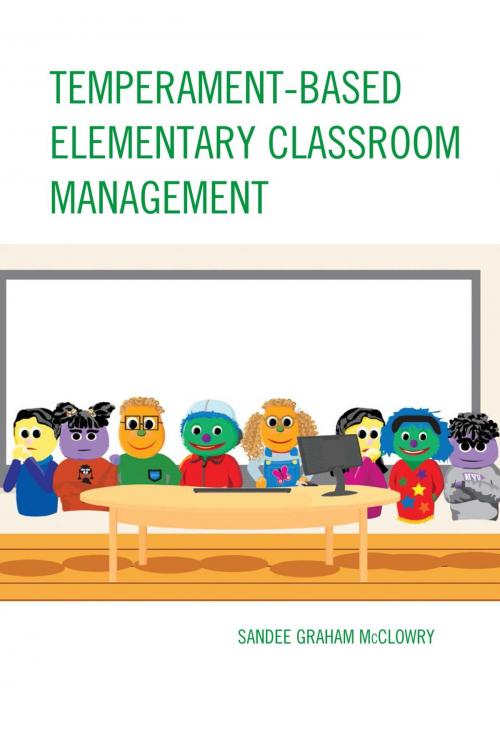Temperament-Based Elementary Classroom Management
Nonfiction, Reference & Language, Education & Teaching, Administration| Author: | Sandee Graham McClowry | ISBN: | 9781475809442 |
| Publisher: | Rowman & Littlefield Publishers | Publication: | April 28, 2014 |
| Imprint: | Rowman & Littlefield Publishers | Language: | English |
| Author: | Sandee Graham McClowry |
| ISBN: | 9781475809442 |
| Publisher: | Rowman & Littlefield Publishers |
| Publication: | April 28, 2014 |
| Imprint: | Rowman & Littlefield Publishers |
| Language: | English |
This book presents an alternative to the “one size fits all” classroom approach. The majority of classroom management books present generic strategies as if they are applicable to all students. The underlying assertion of such books is that if teachers use such approaches, student behavior problems will seldom occur. An alternative framework, presented in this book, asserts that teachers need to incorporate knowledge about temperament into their strategies for classroom management. As studies have demonstrated, targeted temperament-based strategies succeed where global disciplinary practices have failed. Because students differ in their temperaments, variations in classroom behavior are to be expected. Child temperament is the inborn individual characteristics that affect the way children react to different situations. It is also a social processing system through which children view and interact with the world, both altering the responses of others and contributing toward their own development. Once teachers learn the major tenets of temperament, they no longer view their students as intentionally misbehaving. Instead they understand how the temperaments of their students influence their classroom behavior. Such insights release teachers from engaging in futile battles with their students. They can redirect their energies into enhancing their relationships with their students, implementing effective temperament-based strategies, and, as a result, spend more time on instructional activities.
This book presents an alternative to the “one size fits all” classroom approach. The majority of classroom management books present generic strategies as if they are applicable to all students. The underlying assertion of such books is that if teachers use such approaches, student behavior problems will seldom occur. An alternative framework, presented in this book, asserts that teachers need to incorporate knowledge about temperament into their strategies for classroom management. As studies have demonstrated, targeted temperament-based strategies succeed where global disciplinary practices have failed. Because students differ in their temperaments, variations in classroom behavior are to be expected. Child temperament is the inborn individual characteristics that affect the way children react to different situations. It is also a social processing system through which children view and interact with the world, both altering the responses of others and contributing toward their own development. Once teachers learn the major tenets of temperament, they no longer view their students as intentionally misbehaving. Instead they understand how the temperaments of their students influence their classroom behavior. Such insights release teachers from engaging in futile battles with their students. They can redirect their energies into enhancing their relationships with their students, implementing effective temperament-based strategies, and, as a result, spend more time on instructional activities.















